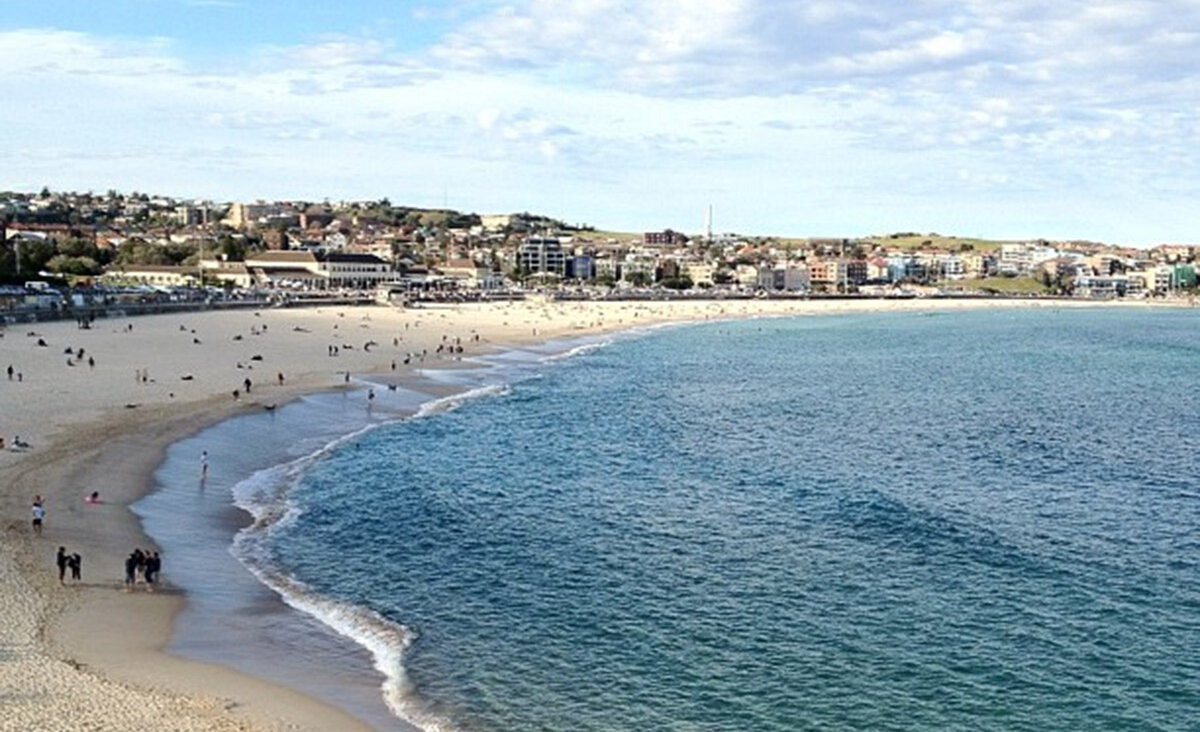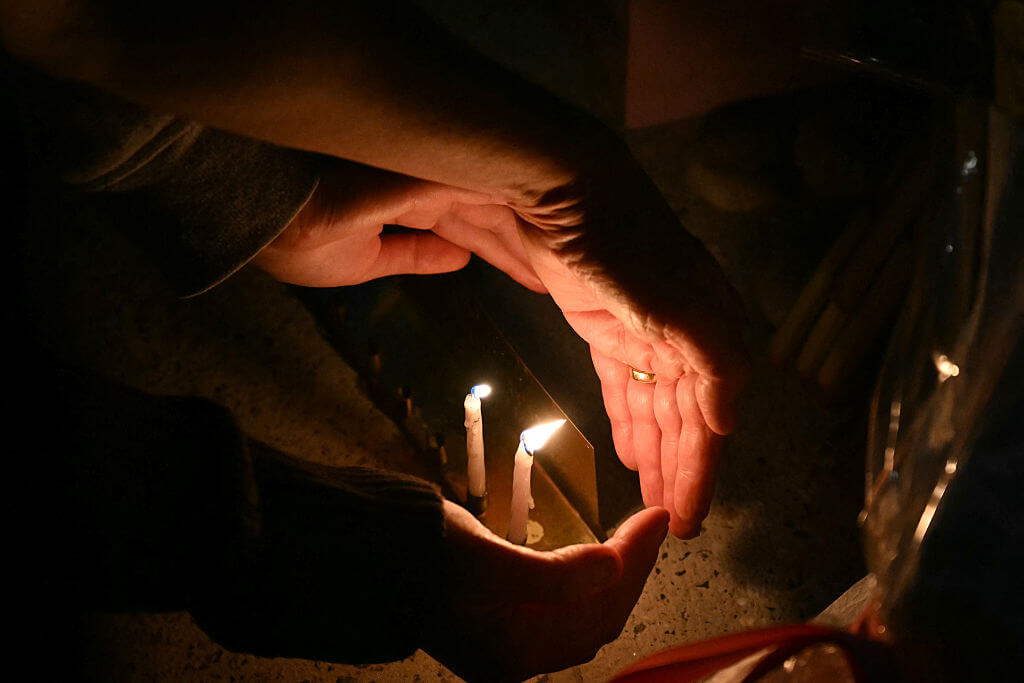The final act of genocide is its denial
Before Israelis could even identify their dead, there were internet campaigns alleging their murderers didn’t do it

Covered bodies at Kibbutz Be’eri near the border with Gaza. Sahar Baruch was kidnapped and his brother murdered in a Hamas attack there. Photo by Jack Guez/AFP via Getty Images
The kibbutzim in Otef Aza were still on fire, and bodies of murdered Nova festival goers still lay in the fields when denials of Hamas atrocities on Oct. 7 began.
Some denials were obviously internet trolls, but others posed as dispatches from news organizations, such as one post from InContextMedia from Oct. 11. The video, “3 Lies Currently Being Told About Palestine,” denies the murder of babies, the rape of Israeli women and the massacre at the Tribe of Nova music festival, with the graphics and calm narration of a cable news channel. Even as increasing evidence of the sexual violence committed by Hamas comes to light, the denials of these crimes grow louder.
Genocide, by its very nature, extends beyond the immediate physical destruction: It encompasses the erasure of truth, the distortion of history, and the infliction of enduring psychological trauma on the survivors and their descendants. When the echoes of violence fade, and the world turns its gaze from the scenes of atrocities, the final act of genocide insidiously unfolds: denial.
This insidious erasure is not merely a refusal to acknowledge historical facts but is an ongoing act of genocide in and of itself, as it seeks to obliterate the memory and dignity of the victims.
The denial of genocide is expressed in various forms, but its essence is consistent — an affront to justice, a direct attack on the survivors, and an attempt to erase the very existence of the victimized group. The 1948 United Nations Convention on the Prevention and Punishment of the Crime of Genocide categorically states in Article II (b) that causing mental harm to members of the targeted group constitutes an act of genocide. Accusations and denials that twist the narrative of genocidal acts not only cause profound mental anguish but also perpetuate the cycle of violence and hatred.
This phenomenon was starkly illustrated in the footage drawn from various sources — including body cameras, security footage, and Hamas fighters’ own livestreams — capturing unfiltered scenes of brutality perpetrated on Oct. 7. It paints an undeniable picture of the atrocities committed against innocent civilians, murdered solely for their identity.
Genocide is not defined by the number of victims, but by the intent, as the U.N. Genocide Convention defined it. The 1,200 lives brutally taken on “Black Shabbat” is relatively small compared to the millions often quoted when “genocide” is invoked, but those innocents were murdered in an act of pure genocidal intent.
Genocide denial can be categorized into three types as identified by genocide researchers Helen Hintjens and Jos van Oijen: literal, where the genocide is outright denied; interpretative, where the acts of violence are acknowledged but recast as something else; and implicatory, where the violence is justified by portraying the victim group as inherently violent.
In the case of the Oct. 7 massacre, all three forms of denial are evident. Hamas’ denial of the events, the re-writing of the narrative to portray the victims as aggressors and the accusation of Israel committing genocide against Palestinians in Gaza are all tactics employed to obscure the truth.
The denial of genocide often aligns with the perpetrators’ narrative. The denial of the Armenian genocide perpetrated by the Ottoman Turks in 1915-1917 began even before the term “genocide” formally entered our lexicon in 1948. Turkish nationalists refuted the overwhelming evidence in which over 1 million Armenians civilians were murdered. Sometimes, the denial takes on a life of its own once the perpetrators themselves are mostly gone, as with current-day Holocaust deniers attempting to rewrite history and legitimize future atrocities. Both modes are sinister attempts to continue the legacy of hate and violence under the guise of historical revisionism.
The concept of “double genocide theory” is a particularly nefarious form of denial. It seeks to offset one genocide by accusing the victim group of perpetrating another. This was evident in the aftermath of the genocide against the Jews in Lithuania in 1941. Lithuanian Jews were falsely accused of being complicit with Soviet oppressors, thus “justifying” the Nazi-led genocide against them. Similarly, in the aftermath of the Rwandan Genocide, the victorious Rwandan Patriotic Front, who led a military campaign in 1994 to prevent the complete annihilation of Tutsis being slaughtered by Hutu extremists, was baselessly accused of revenge acts against Hutus, thereby labeling them as perpetrators of a secondary genocide.
The masterminds of genocide generally have a twisted perception of truth. They take pride in their acts of violence, yet simultaneously deny them to minimize the likelihood of being prosecuted and thereby rob their victims of justice and the truth. Denial, such as that used by the Sudanese Government in 2004 during an ongoing genocide of ethnic groups in Darfur, impedes healing, thwarts the judicial process and distorts the truth for the public.
In the Jewish community, the lessons of the past have taught the critical importance of confronting and countering genocide denial. Today, this battle takes on a new dimension in the digital age, where misinformation and unqualified opinions proliferate online. Establishing and disseminating the facts is more crucial than ever.
The struggle against genocide and its denial is a war of narratives. Like rockets launched in hopes of striking a target, the barrage of denial and misinformation aims to sow enough doubt to diminish the gravity of events like those of Oct. 7, recasting Palestinians as the sole victims in the conflict.
This battle for truth and justice is far from over. It demands vigilance, determination and an unwavering commitment to preserve the memory of those lost to the unspeakable horrors of genocide. We must shield their legacy from the eroding tides of denial.
To contact the author, email [email protected].















